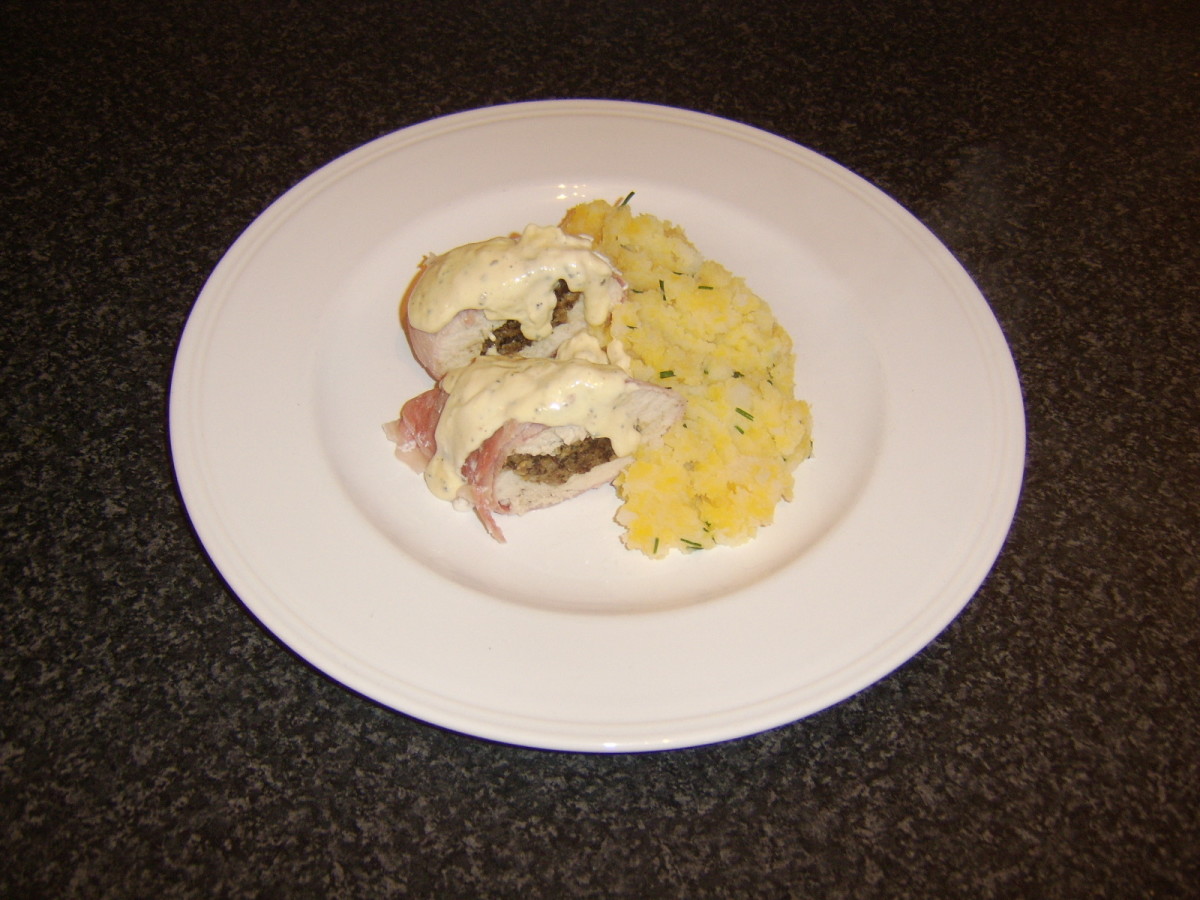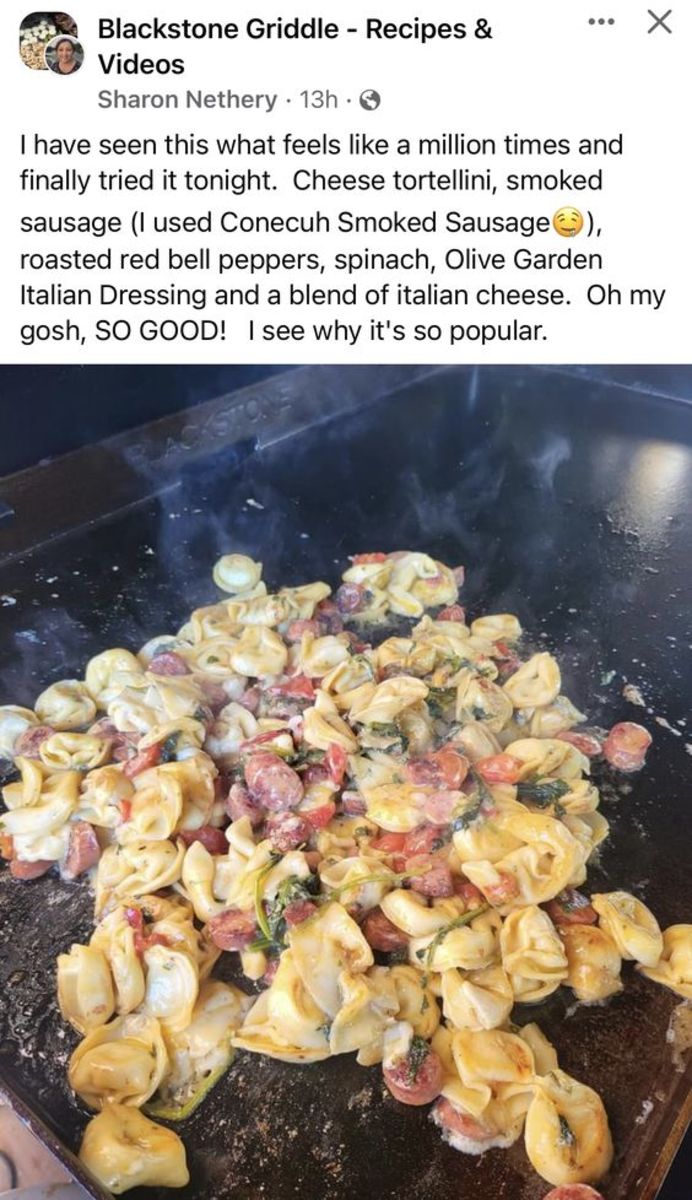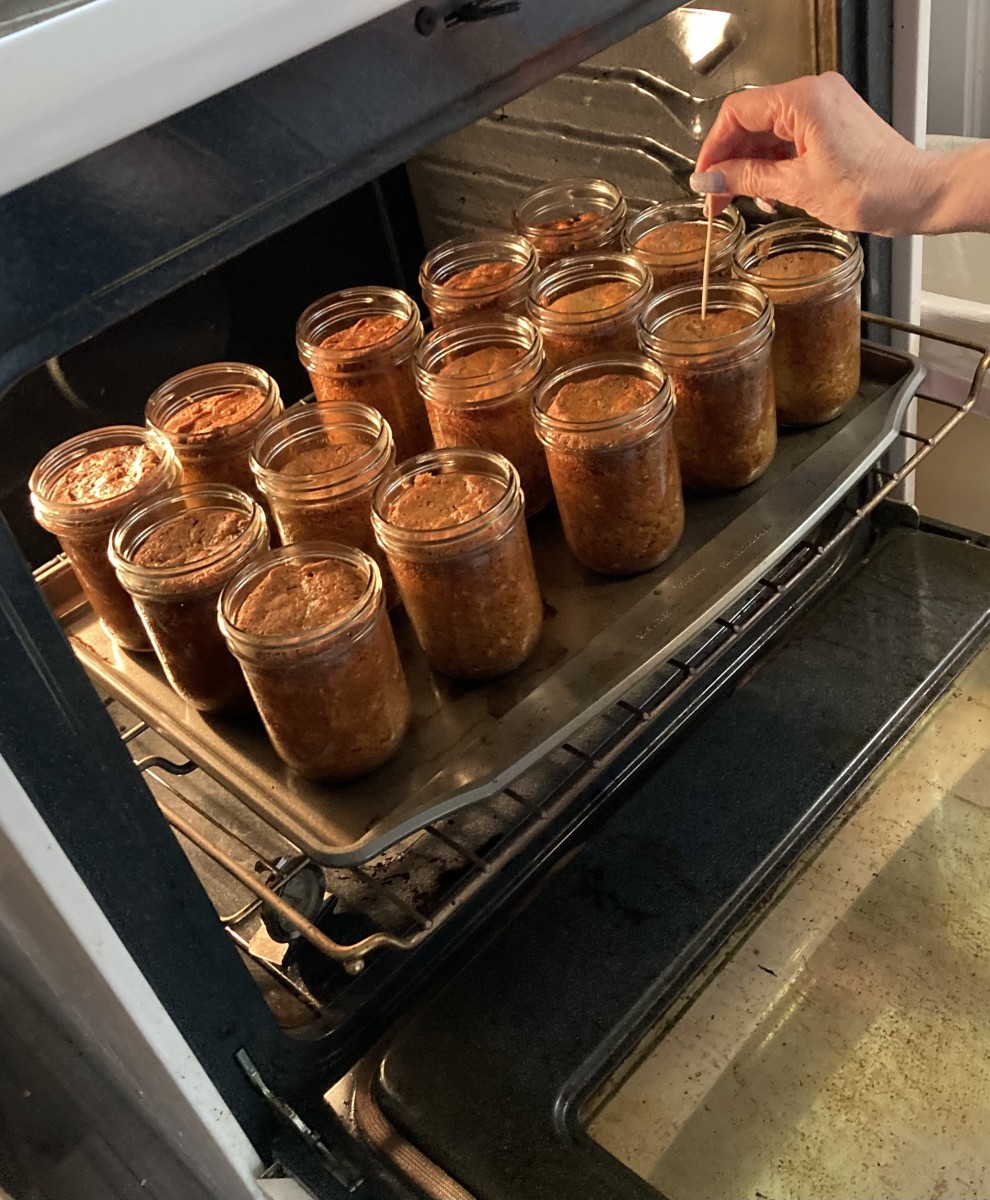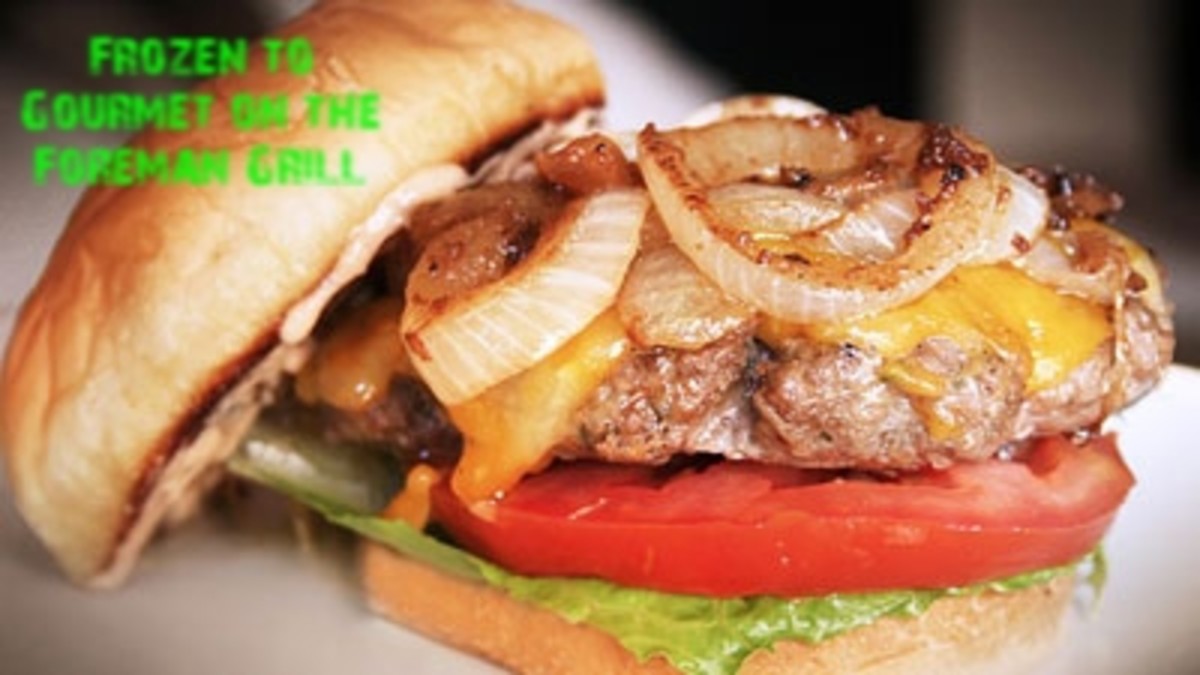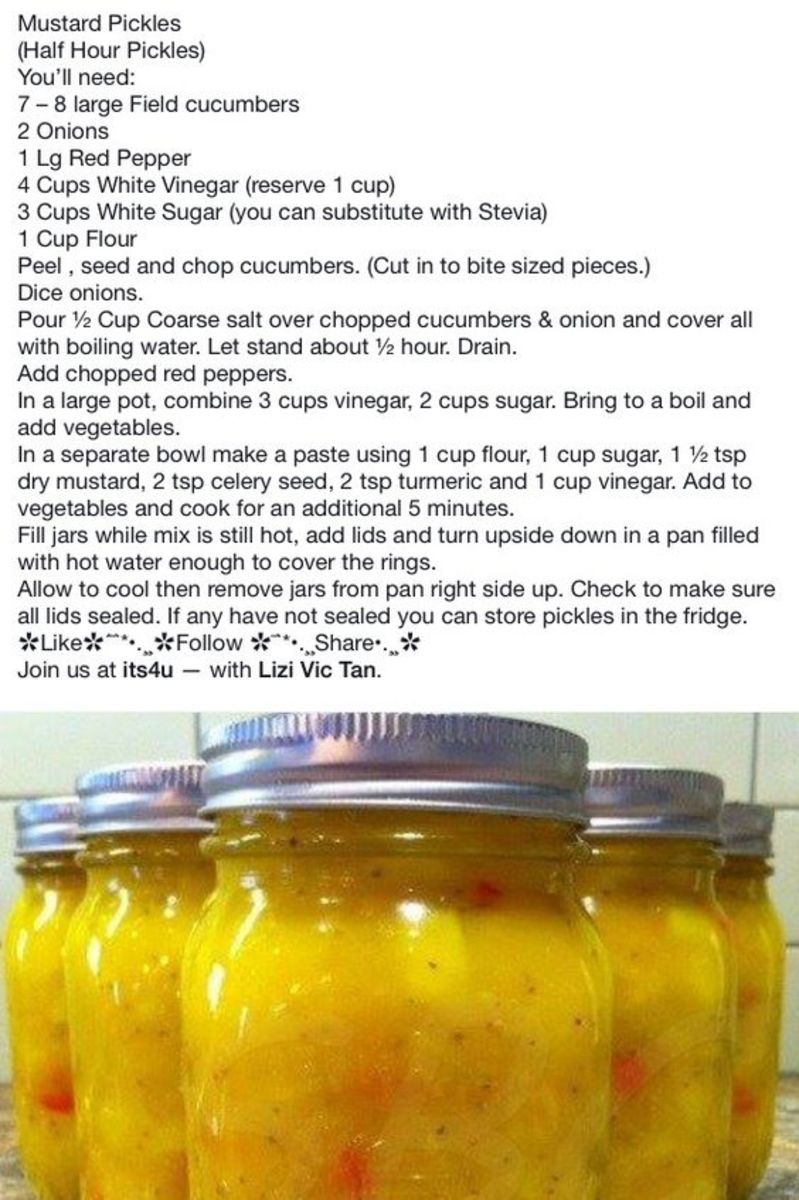How to Cook Chicken (Cooking at 375 Degrees) - Why You Don't Cook With Giblets
Step 1 - Make Preparations
First things first. If it's frozen, set the chicken out to thaw for an hour or two before cooking it. If it's just slightly cold from sitting in the refrigerator, 45 minutes should do the trick. Letting it sit out to thaw on the counter will allow it cook all the way through. Chicken is a meat that it is imperative to cook thoroughly before eating, due to some nasty bacteria that lives in it. That brings me to my next point which is to make sure you don't let the raw chicken cross contaminate any other food. Be sure to use clean utensils and wash everything that the chicken comes in contact with immediately.
Secondly, you're going to want to thoroughly wash your hands with soap and hot water to make sure you kill any germs on them before starting.
The final preparation to make is to preheat your oven to 375 degrees Fahrenheit. If you're oven operates in Celsius, that is converted to 90 degrees Celsius.
the bacteria in raw chick and its juices easily cross contaminates other foods
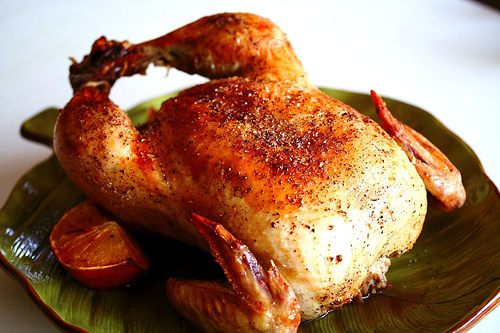
Step 2 - Removing Skin and Giblets
You can choose whether or not you wish to remove the skin. It's optional and should be based on the preference of yourself and everyone else who will be eating the chicken.
The giblets must come out, however. They are located in the abdominal cavity. You need to remove the liver, the kidneys, the heart and any other organs you find up there.
The giblets are edible and a great source of protein. If you wish to eat the giblets later, immediately refrigerate them after removing them and be sure to consume them within one to two days or else they will go bad. As a side note, they make a great soup!
Step 3 - Clean The Meat
To make sure the chicken's skin is cooked as crispy as possible, run the raw bird under cold tap water for a few minutes then thoroughly dry it with a couple hand towels.
This will also help to clean the meat, killing a fair amount of bacteria, but you'll still want to make sure you cook it thoroughly in Step 5.
Step 4 - Seasoning
You'll need a wire rack set to season your chick. Set the wire rack set in a roasting tin, with the chicken on it, and grease the skin with a little bit of butter. This will cause the fat to drip out of the bird and off of the meat when it is cooking.
Apply tons and tons of salt and fresh ground pepper. Get really creative here and experiment with your choices of different herbs and other seasonings, both inside and out of the chicken. Over time, you'll find the perfect combination and recipe of spices and herbs to make some extremely mouth watering chicken.
One of my favorite tricks is to place a bit of garlic and about half of an onion into the abdominal cavity of the chicken while it cooks. Try this out and be prepared to be blown away by the deep flavor it adds.
Step 5 - Cook The Chicken in The Oven
Before putting your chicken into your oven, take a meat thermometer and stick it into the thickest part of the chicken's thigh, but be sure not to touch the bone. We'll use this thermometer to let us know when chicken is done. As soon as the thermometer reads 180 degrees Fahrenheit, or 83 degrees in Celsius, you'll know the bacteria has been completely killed off and the chicken is ready to eat.
Basting the Chicken
Every 20 minutes, pull the chicken out of the oven and use a cooking brush to even out the juices, spreading them all over the meat. This will help keep the chicken meat moist so it cooks more even, while at the same time keeping the skin from burning and creating more of a crispy texture.
Step 6 - Let The Chicken Sit
After the thermometer has confirmed the bacteria is all dead and the chicken is done cooking, it is ALMOST ready to eat. You still need to pull it out of the oven and let it sit for 15 to 20 minutes.
This will allow it to both cool off and let the juices reabsorb and dry into the skin creating a more flavorful, crispy texture.
After 15 to 20 minutes pass, you're ready to eat! Bona petit.


